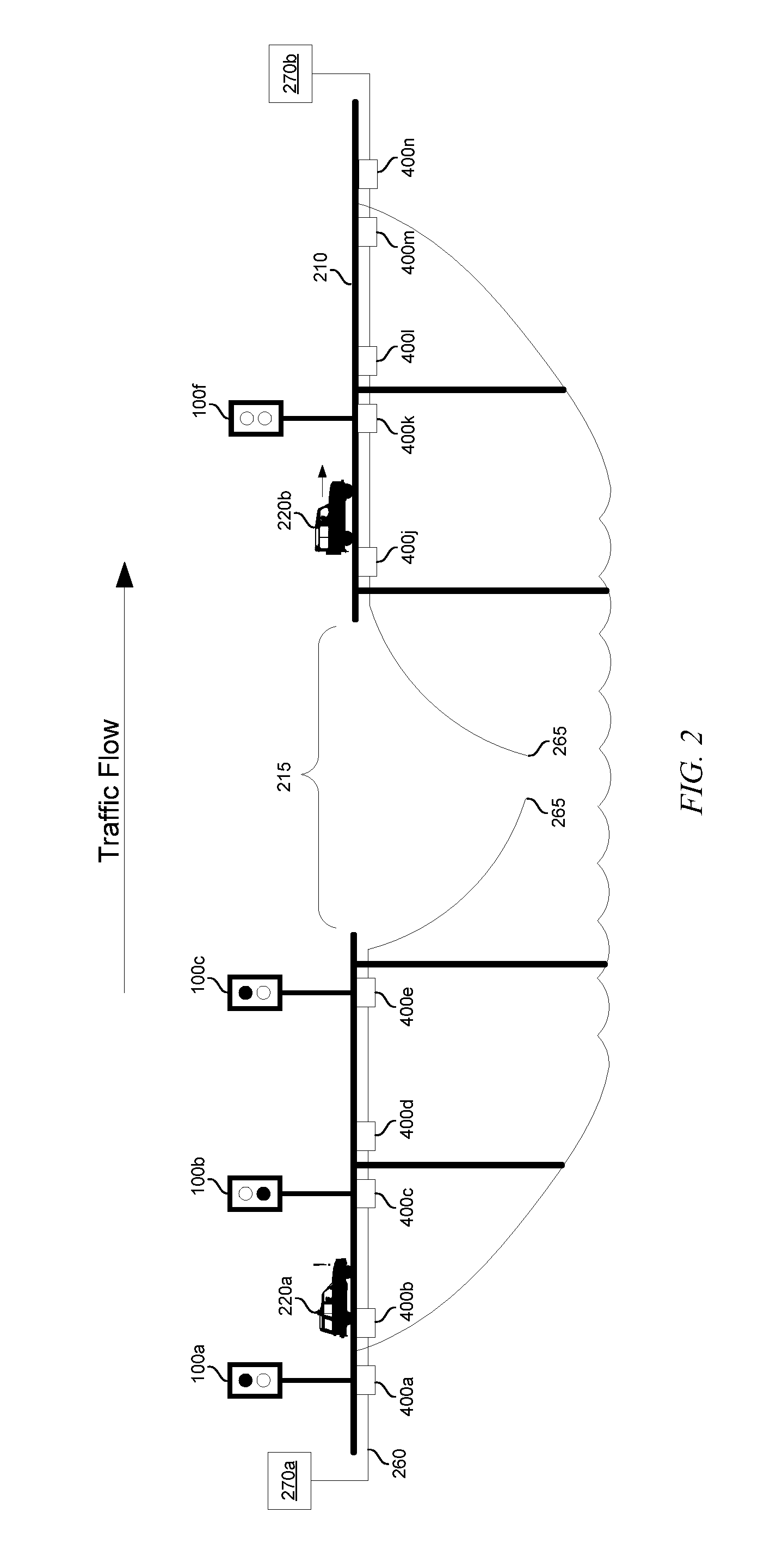System and method for multiplexing traffic signals and bridge collapse detection
a traffic signal and multiplexing technology, applied in the field of transportation signaling, can solve the problems of failing to notify motorists, waste of power supply in each signal lamp, and disable all beacons, and achieve the effects of simple rectifier and battery charger, waste of power supply in each signal lamp, and low cos
- Summary
- Abstract
- Description
- Claims
- Application Information
AI Technical Summary
Benefits of technology
Problems solved by technology
Method used
Image
Examples
Embodiment Construction
[0017]Embodiments of the present invention and their advantages are best understood by referring to FIGS. 1 through 5 of the drawings, in which like numerals refer to like parts.
[0018]FIG. 1 shows a diagram of one embodiment of a system for controlling traffic signal beacons. A traffic signal controller 105 contains a processor 190 which selects a desired state of a multitude of traffic signal lamps 140 to control the flow of motor vehicles in a desired fashion. A single logical state transmitted over a single pair of wires 160 describes the desired traffic flow for the entire intersection. Power supply 185 provides low-voltage DC power to operate traffic lights 140a-b. Power supply 185 may also include a backup battery. Encoder 180 encodes the desired state and also couples DC power to cable 160. Encoding of three states (top lamp on, bottom lamp on, and no lamp on) is possible using only the polarity of the applied power (positive, negative, and off). Any other encoding method is ...
PUM
 Login to View More
Login to View More Abstract
Description
Claims
Application Information
 Login to View More
Login to View More - R&D
- Intellectual Property
- Life Sciences
- Materials
- Tech Scout
- Unparalleled Data Quality
- Higher Quality Content
- 60% Fewer Hallucinations
Browse by: Latest US Patents, China's latest patents, Technical Efficacy Thesaurus, Application Domain, Technology Topic, Popular Technical Reports.
© 2025 PatSnap. All rights reserved.Legal|Privacy policy|Modern Slavery Act Transparency Statement|Sitemap|About US| Contact US: help@patsnap.com



